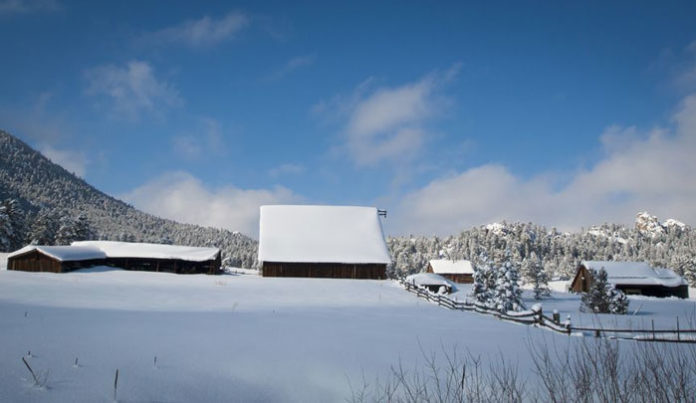Getting the homestead ready for winter takes practically all summer to accomplish. Fruits and vegetables are grown all summer so they can be preserved and eaten all winter. Wood is cut and stacked all summer so it can be used all winter for heating and cooking, and the list goes on.
Once winter sets in does not mean you get to hibernate until spring thaw however. There is plenty of work to do as the snow falls and the temperatures plunge.
Livestock is fed well all summer and then culled out after the first freeze. Chickens that have stopped laying eggs go in the pot, canning jars and the freezer. You have to keep the number of chickens at a level that your coop can support all winter.
Hogs were usually butchered after the first freeze years ago, because the cold allowed more time to process the meat without the fear of spoilage. After all you raise hogs for food, and they have to be culled at some point, and fall is the perfect time, so the younger ones not ready for the dinner table can be fed well over the winter.
You may have to wrap the bark of your fruit trees to keep the animals from gnawing the bark away close to the ground even under the snow.
The last of your garden will need to be taken care. Tomato plants with green tomatoes still on them can be pulled and put under the house to ripen or put anywhere they would not freeze. Root vegetables can be dug up and put in the root cellar.
If you have a composting toilet you will need a substantial supply of sawdust and wood chips, so make sure you have an adequate and dry storage area. Wondering about this after the first snow fall may be problematic.
If your area receives heavy snows, you may have to remove the snow from the roofs of buildings to prevent collapse. Certain roofs are more susceptible to this than others are. Much depends on the pitch. Gabled roofs allow the snow to slide off more easily, while less pitched roofs of course may allow the snow to build up creating weight your roof may not be able to handle. You certainly do not want barns or coops collapsing under the weight of the snow.
You also want to keep the snow from building up on roofs to prevent avalanches that could injure someone or even the livestock. This is particularly important during freeze thaw periods were ice could build up and cause significant damage or injury if it slides off. Snow rakes are available in various lengths or you could make your own.
Manual pump systems may freeze up in cold weather and when they do, they have to be thawed out by pouring warm water over the mechanism. This is not an ideal situation, so evaluate your water system to make sure it can handle the cold weather.
Stock tanks and buckets of water can freeze up quickly if it gets cold enough, so you would need some method to prevent this from happening unless you can water multiple times a day, and providing the livestock drinks the water before it freezes up.
Water needs for dairy cows, for example, is generally 1 gallon per 100 pounds of body weight during cold weather to nearly 2 gallons per 100 pounds of body during the hottest weather. Livestock that only get their water from snow have shown a marked mineral deficiency. This would of course affect milk output in dairy cows and a marked difference in meat quality and quantity when it comes time for butchering cattle for meat (University of Nebraska–Lincoln, n.d.).
Tank heaters are one option but they do require a steady flow of electricity, and the same thing would apply to heaters for water buckets. The buckets would have to be stationary, but ideal for unheated sheds or barns.
Another option in certain areas would be water circulators that keep the water moving. Moving water will not freeze as quickly, but it will freeze if it gets cold enough. Again you would need electricity to power the circulating devices. Propane heaters are another option if you can get resupplied with propane, or have a large enough storage tank to get through the cold months.
Do you have the means to shovel paths to the barn, out house and other out buildings? It may not seem much of a problem when the temperature is warm, but a foot of snow on the ground can cause problems if you have to make your way through it to the barns and coop, and you need a plan before the snow falls. You can use a snow blower, shovel, or tractor, and keep in the mind the road and driveways leading up to the homestead would need to be cleared of snow as well.
In years past people did not worry so much about getting out when they were snowed in, but in today’s world there will be times that you need to get to town regardless of the weather.
The smallest of details can make for a bad day, so look at the smaller details, as well as, the big picture, because not being able to get to the latrine quick enough in the morning, because of deep snow is no way to start out the day.
UNIVERSITY OF NEBRASKA–LINCOLN. (n.d.). Retrieved 2015, from http://beef.unl.edu/amountwatercowsdrink


